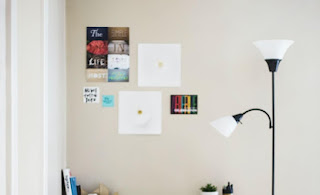"The function of design is letting design function" encapsulates the very essence of design philosophy. In this blog post, we delve into this profound statement, dissecting its layers of meaning and implications. From usability and aesthetics to problem-solving and user experience, we explore how design's primary role is to facilitate functionality while allowing creativity to flourish.
Design's Fundamental Purpose
"The function of design is letting design function" is a statement that underscores the core purpose of design—to create solutions that work seamlessly and effectively. While aesthetics play a crucial role, they are not isolated from the functional aspects of design. Rather, they coexist to enhance the overall user experience.
Usability and User-Centered Approach
At the heart of design is the concept of usability. A design should be intuitive and user-friendly, allowing individuals to interact with it effortlessly. Whether it's a website, a piece of furniture, or an application, the user's needs, preferences, and expectations should drive the design process. Functionality and usability go hand in hand, ensuring that the design fulfills its intended purpose.
Balancing Form and Function
Designing for function doesn't mean sacrificing aesthetics. Instead, it's about finding the delicate balance between form and function. A visually appealing design can enhance user engagement and make the experience more enjoyable. The aesthetics of a design should complement its function, creating a harmonious blend that resonates with users on both practical and emotional levels.
Solving Problems Creatively
Design is inherently problem-solving. It's about identifying challenges and crafting innovative solutions that address those challenges effectively. When design truly functions, it solves real-world problems, whether they're related to efficiency, convenience, or even sustainability. Creativity comes into play when designers think outside the box to find unique ways of tackling these issues.
User Experience and Emotional Connection
A design that functions optimally doesn't just fulfill practical needs; it also fosters an emotional connection with users. A well-designed product or experience can evoke positive emotions and memories, creating a lasting impact on individuals. This emotional resonance contributes to the success of the design and enhances user loyalty.
Stripping Away Unnecessary Complexity
A design that functions well is often characterized by its simplicity. Unnecessary complexity can hinder usability and dilute the design's purpose. By focusing on the essential elements and removing any superfluous details, designers create designs that are not only elegant but also highly functional.
Flexibility and Adaptability
In an ever-changing world, designs need to be adaptable to evolving needs and contexts. The function of design isn't confined to a specific moment in time; it extends to the design's ability to remain relevant and effective over time. A design that can adapt to different scenarios and user requirements ensures its longevity and value.
Innovation and Progression
"The function of design is letting design function" embraces the idea of design as a catalyst for innovation and progression. As technology advances and new challenges emerge, designers must continually seek ways to enhance functionality, efficiency, and user satisfaction. This pursuit of improvement drives the evolution of design itself.
Conclusion: Empowering Functionality Through Design
"The function of design is letting design function" is a mantra that encapsulates the heart of design philosophy. It underscores the importance of usability, problem-solving, aesthetics, and innovation in the design process. When design truly functions, it empowers users, enriches experiences, and leaves a lasting impact. Ultimately, the power of design lies in its ability to harmonize purpose and creativity, resulting in solutions that stand the test of time.






0 Comments